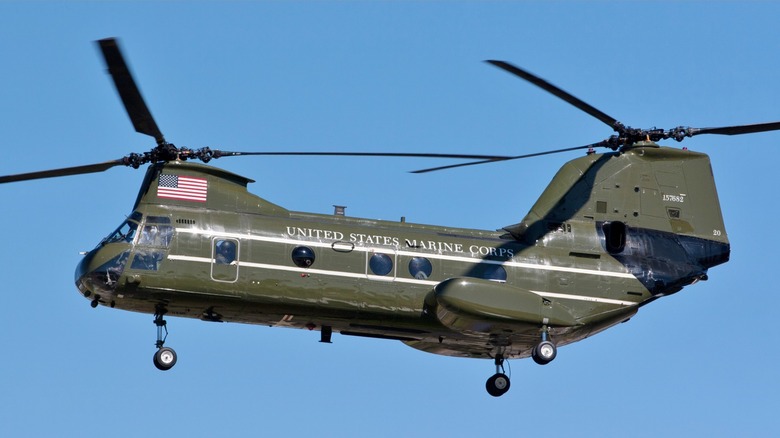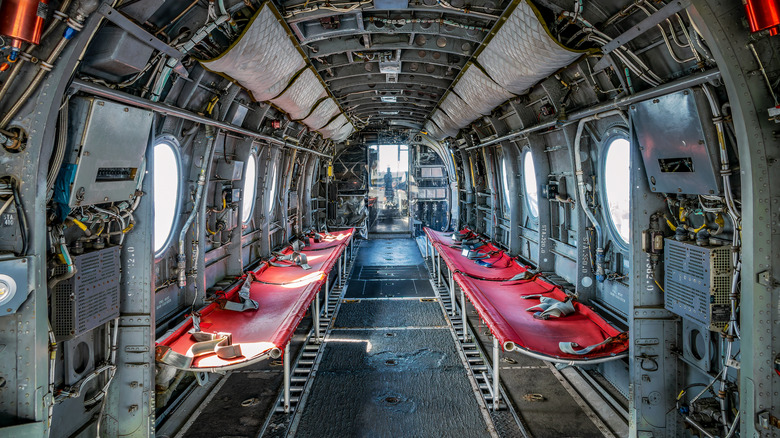Is The CH-46 Helicopter Still Flying & How Many People Can One Carry?
While many are familiar with the U.S. Army's Boeing CH-47 Chinook tandem-rotor helicopter, the U.S. Marine Corps used a different model, the Boeing Vertol CH-46 "Phrog" Sea Knight, which it began flying in 1964. It was the service's primary troop transport chopper during the Vietnam War, operating alongside the UH-1 Iroquois and the legendary, yet accident-prone CH-53 Sea Stallion. They also carried Marines into Grenada during Operation Urgent Fury, helping to rescue the crew of a downed AH-1 Cobra.
The aircraft could carry 25 fully loaded troops or up to 6,000 pounds of cargo. The Marines flew the CH-46 for 51 years until the service finally retired it on August 1, 2015. Its replacement was the V-22 Osprey, which utilizes a tilt-rotor design to operate as both a helicopter and an airplane. Still, the UH-46 had a long history of flying troops and other personnel into and out of combat zones for the better part of a century.
The U.S. no longer flies the CH-46, but the nation didn't chuck them all into a volcano, either, and other countries like Argentina are interested in acquiring them. The remaining fleet of CH-46s is stored with the 309th Aerospace Maintenance and Regeneration Group in Arizona. They remain at the so-called "Airplane Boneyard" for parts or potential refit and reuse, so selling them to allied nations remains a possibility. The CH-46 is also used by civilians, including Sky Aviation, which flies it primarily to fight forest fires.
The versatile CH-46 remains popular globally
The CH-46 Sea Knight was an indispensable aircraft that saw widespread use throughout every conflict in which the U.S. Marine Corps was engaged during its time in service. Several models were released since its introduction, each improving on some of the characteristics of earlier versions. The final model was the CH-46F, marking the end of CH-46 production with the 524th helicopter in February 1971. Regardless of the model, the cabin's capacity could change based on mission requirements.
Depending on its intended use, a CH-46 could carry up to 25 combat troops, 15 litters, or 22 ambulatory casualties with two corpsmen (medics). The aircraft was crewed by four to five personnel: two pilots, a crew chief, and a mechanic, the latter of whom was replaced by two aerial gunners for combat. The Marine Corps isn't the only U.S. service to have stopped using the CH-46. When the U.S. pulled out of Afghanistan, the State Department abandoned all of its CH-46s in the country after rendering them inoperable. This suggests nobody in Afghanistan will fly them, but there are other nations that use the CH-46.
For years, the Japanese Self-Defense Force has flown a licensed version called the Kawasaki KV-107. Similar licensed versions and variants have flown in Australia, New Guinea, and New Zealand. The Swedish Air Force also flew CH-46s, although it has also retired the chopper. CH-46s also continue to fly commercially in the U.S. and for other nations around the world, more than 50 years after their introduction.

